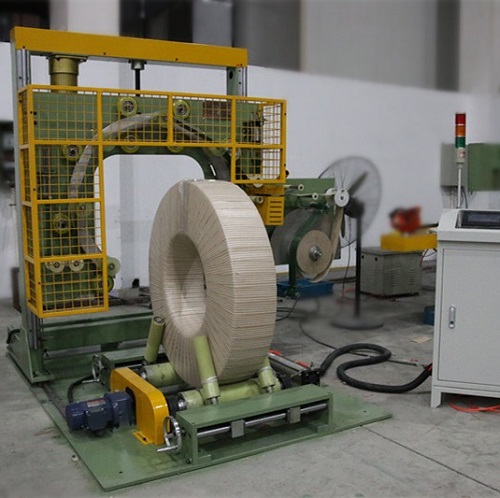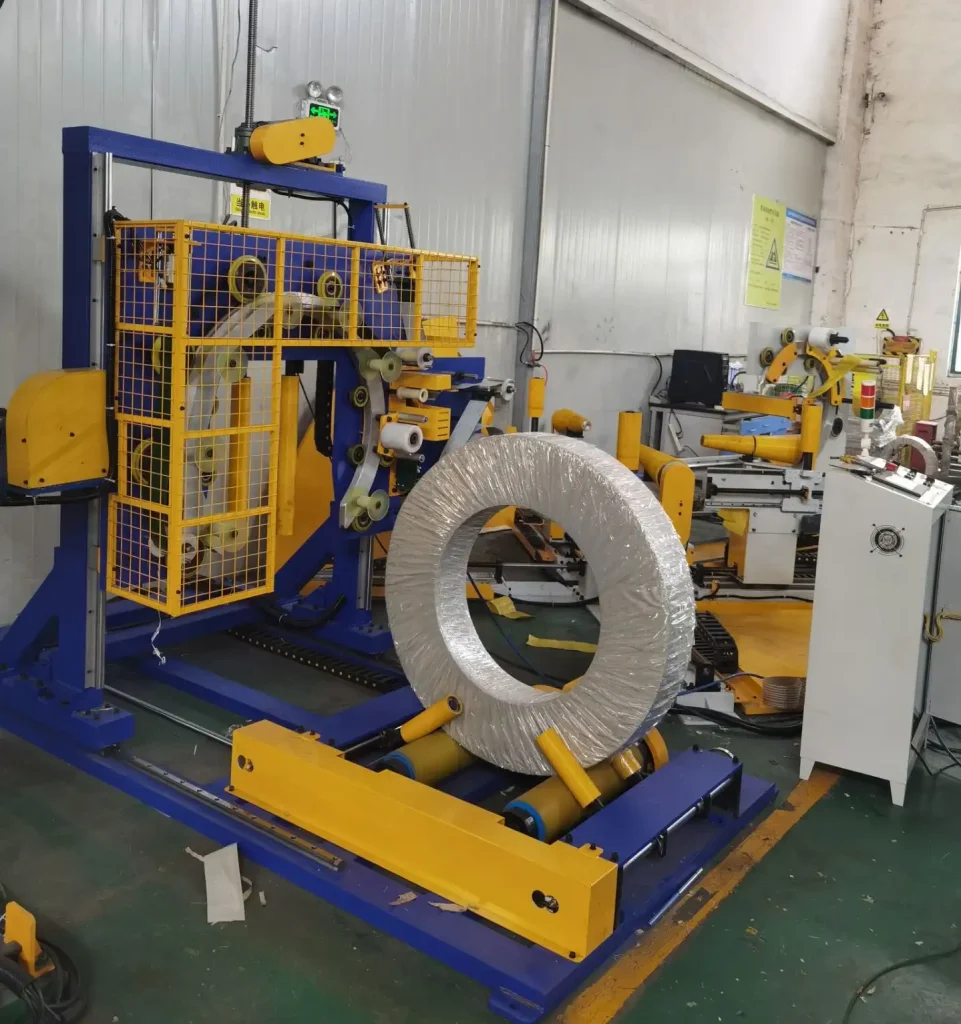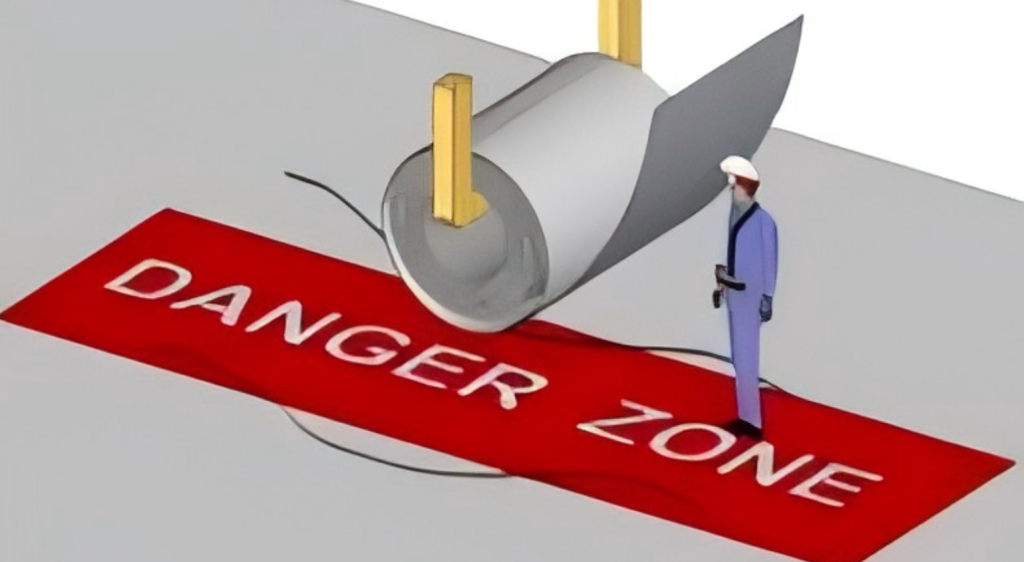When I first stepped into the world of manufacturing, I was overwhelmed by the sheer variety of machinery available. One machine, in particular, caught my attention—the coil wrapping machine. It’s a fascinating piece of equipment, essential for industries that deal with coils of metal, wire, or other materials. But how many types of coil wrapping machines are there? This question led me on a journey to explore the different types, their functionalities, and their applications. In this article, I’ll share what I’ve learned, breaking down the complexities and providing you with a clear understanding of the various coil wrapping machines available today.
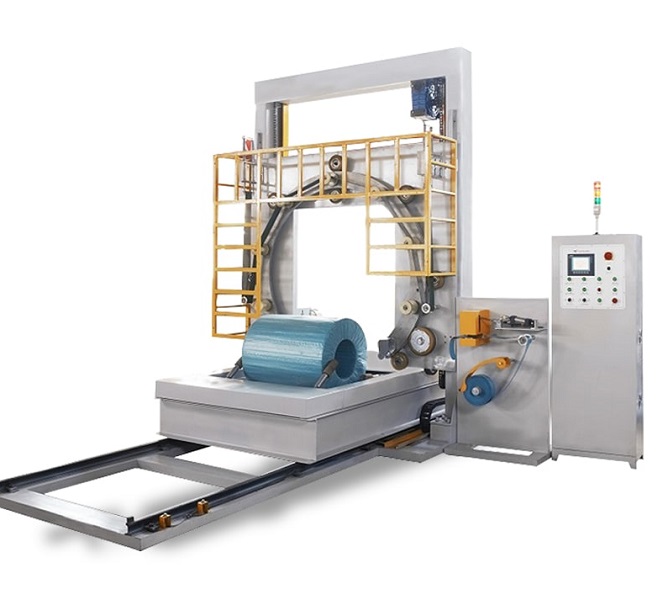
Coil wrapping machines are designed to protect coils during storage and transportation. They wrap materials like stretch film, paper, or foil around the coil to prevent damage from moisture, dust, or physical impact. The type of wrapping machine you choose depends on the material you’re working with, the level of protection required, and the production volume. From manual to fully automated systems, the options are vast, each with its own set of advantages and limitations.
As I delved deeper into the subject, I realized that understanding the different types of coil wrapping machines is crucial for making an informed decision. Whether you’re in the steel industry, aluminum production, or any other field that uses coils, knowing which machine suits your needs can save you time, money, and a lot of headaches. So, let’s dive into the world of coil wrapping machines and explore the various types available.
Table of Content
- What Are the Main Types of Coil Wrapping Machines?
1.1 Manual Coil Wrapping Machines
1.2 Semi-Automatic Coil Wrapping Machines
1.3 Fully Automatic Coil Wrapping Machines
1.4 Rotary Arm Coil Wrapping Machines
1.5 Turntable Coil Wrapping Machines - How Do Coil Wrapping Machines Work?
2.1 The Basic Mechanism of Coil Wrapping
2.2 Key Components of a Coil Wrapping Machine
2.3 The Role of Automation in Coil Wrapping
2.4 Common Challenges in Coil Wrapping - What Are the Applications of Coil Wrapping Machines?
3.1 Steel and Aluminum Industries
3.2 Wire and Cable Manufacturing
3.3 Paper and Textile Industries
3.4 Custom Applications and Specialized Wrapping - How to Choose the Right Coil Wrapping Machine?
4.1 Factors to Consider When Selecting a Machine
4.2 Cost vs. Efficiency: Finding the Balance
4.3 Maintenance and Longevity of Coil Wrapping Machines
4.4 Future Trends in Coil Wrapping Technology
What Are the Main Types of Coil Wrapping Machines?
1.1 Manual Coil Wrapping Machines
Manual coil wrapping machines are the simplest type of wrapping equipment available. They require human intervention to operate, making them ideal for small-scale operations or businesses with low production volumes. These machines are typically less expensive than their automated counterparts, but they come with limitations in terms of speed and consistency.
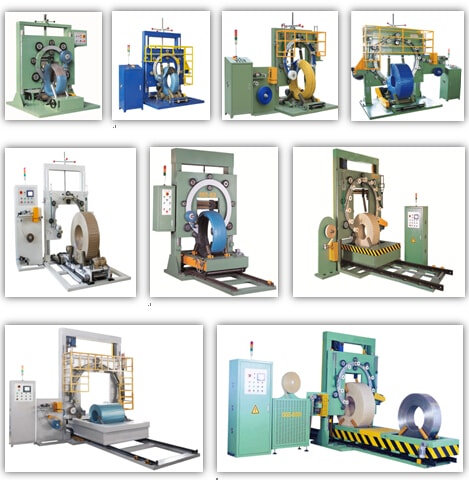
When I first encountered a manual coil wrapping machine, I was struck by its simplicity. The operator manually feeds the wrapping material around the coil, ensuring that it’s evenly distributed. While this method is cost-effective, it’s also time-consuming and can lead to inconsistencies in the wrapping quality. However, for businesses that don’t require high-speed wrapping or have a limited budget, manual machines can be a practical solution.
1.2 Semi-Automatic Coil Wrapping Machines
Semi-automatic coil wrapping machines offer a middle ground between manual and fully automatic systems. These machines require some human intervention but are equipped with features that automate certain aspects of the wrapping process. For example, the operator may need to load the coil onto the machine, but the wrapping itself is done automatically.
I found that semi-automatic machines are particularly useful for medium-sized businesses that need a balance between cost and efficiency. They’re faster than manual machines and provide more consistent wrapping quality. However, they still require some level of operator involvement, which can be a drawback for companies looking to fully automate their production lines.
1.3 Fully Automatic Coil Wrapping Machines
Fully automatic coil wrapping machines are the pinnacle of wrapping technology. These machines require minimal human intervention and can handle high volumes of coils with ease. They’re equipped with advanced features like automatic coil loading, precise wrapping control, and even robotic arms for handling heavy coils.
When I first saw a fully automatic coil wrapping machine in action, I was amazed by its efficiency. The machine seamlessly wrapped coil after coil, with each one coming out perfectly uniform. These machines are ideal for large-scale operations where speed and consistency are critical. However, they come with a higher price tag and require more maintenance than manual or semi-automatic machines.
1.4 Rotary Arm Coil Wrapping Machines
Rotary arm coil wrapping machines are a specialized type of wrapping equipment that uses a rotating arm to wrap the material around the coil. These machines are known for their versatility and ability to handle coils of various sizes and shapes. The rotating arm moves around the coil, ensuring that the wrapping material is evenly distributed.
I discovered that rotary arm machines are particularly popular in industries that deal with irregularly shaped coils or require a high degree of customization. They’re also known for their durability and ability to handle heavy-duty wrapping tasks. However, they can be more complex to operate and maintain compared to other types of wrapping machines.
1.5 Turntable Coil Wrapping Machines
Turntable coil wrapping machines are another popular option, especially for businesses that need to wrap large or heavy coils. These machines feature a rotating turntable that holds the coil in place while the wrapping material is applied. The turntable rotates, ensuring that the entire coil is evenly wrapped.
I found that turntable machines are particularly effective for wrapping large coils that are difficult to handle manually. They’re also known for their stability and ability to provide consistent wrapping quality. However, they can be more expensive than other types of wrapping machines and may require more space in your facility.
1.6 Two Fact Statements
- True Fact: Manual coil wrapping machines are the most cost-effective option for small businesses with low production volumes.
Explanation: Manual machines require less upfront investment and are easier to operate, making them ideal for businesses that don’t need high-speed wrapping. - False Fact: Fully automatic coil wrapping machines are less efficient than manual machines.
Explanation: Fully automatic machines are designed for high-speed, high-volume production, making them far more efficient than manual machines, especially for large-scale operations.
How Do Coil Wrapping Machines Work?
2.1 The Basic Mechanism of Coil Wrapping
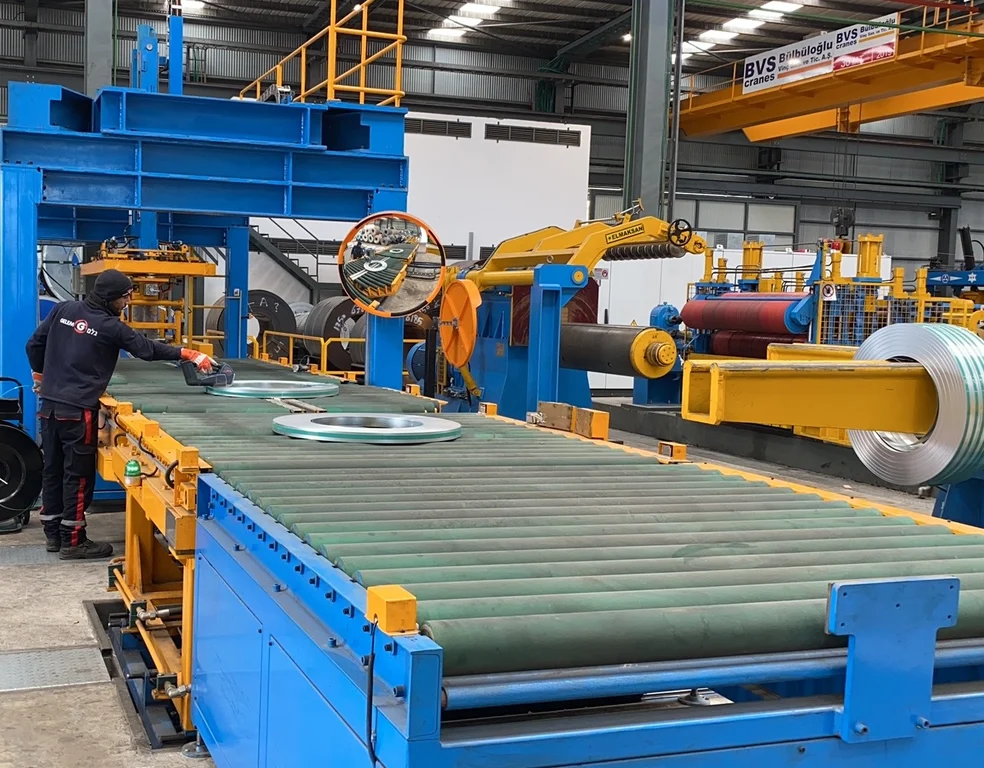
Understanding how coil wrapping machines work is essential to appreciate their functionality. At their core, these machines are designed to apply a protective layer—be it stretch film, paper, or foil—around a coil. The process begins with the coil being placed on the machine, either manually or automatically, depending on the type of machine. The wrapping material is then fed through a series of rollers and guides, ensuring it’s evenly distributed around the coil.
When I first observed this process, I was fascinated by the precision involved. The machine’s arm or turntable rotates around the coil, applying the wrapping material in a consistent pattern. The tension of the wrapping material is carefully controlled to ensure it’s neither too loose nor too tight. This balance is crucial for providing adequate protection without damaging the coil.
2.2 Key Components of a Coil Wrapping Machine
Coil wrapping machines consist of several key components that work together to achieve the desired result. Here’s a breakdown of the main components:
| Component | Function |
|---|---|
| Frame | Provides structural support and stability during operation. |
| Wrapping Arm/Turntable | Rotates around the coil to apply the wrapping material evenly. |
| Film/Paper Dispenser | Feeds the wrapping material through rollers and guides. |
| Sensors and Controls | Regulate speed, tension, and positioning of the wrapping material. |
| Drive System | Powers the rotation of the arm or turntable. |
| Safety Features | Includes emergency stops and guards to protect operators. |
I found that the quality of these components directly impacts the machine’s performance. For example, a sturdy frame ensures stability during operation, while high-quality sensors and controls enhance precision. Understanding these components can help you make an informed decision when selecting a coil wrapping machine for your business.
2.3 The Role of Automation in Coil Wrapping
Automation plays a significant role in modern coil wrapping machines. Automated systems can handle tasks like coil loading, wrapping, and even unloading with minimal human intervention. This not only increases efficiency but also reduces the risk of errors and inconsistencies.
When I explored automated coil wrapping machines, I was impressed by their ability to handle high volumes of coils with remarkable speed and accuracy. These machines are equipped with advanced software that allows for precise control over the wrapping process. For businesses looking to scale their operations, investing in an automated coil wrapping machine can be a game-changer.
2.4 Common Challenges in Coil Wrapping
Despite their efficiency, coil wrapping machines are not without challenges. Here are some common issues and their solutions:
| Challenge | Solution |
|---|---|
| Wrapping material tearing | Use high-quality wrapping material and ensure proper tension control. |
| Inconsistent wrapping quality | Regularly calibrate the machine and train operators for optimal performance. |
| Handling coils of varying sizes | Invest in machines with adjustable settings or customizable features. |
| Maintenance requirements | Schedule regular maintenance to prevent breakdowns and ensure longevity. |
I discovered that regular maintenance and proper training for operators can mitigate many of these challenges. Ensuring that the machine is calibrated correctly and that the wrapping material is of high quality can go a long way in preventing issues. Additionally, staying updated on the latest advancements in coil wrapping technology can help you address any challenges that arise.
2.5 Two Fact Statements
- True Fact: Automation in coil wrapping machines significantly reduces the need for human intervention, increasing efficiency and consistency.
Explanation: Automated systems can handle tasks like loading, wrapping, and unloading with precision, making them ideal for high-volume operations. - False Fact: Coil wrapping machines do not require regular maintenance to function efficiently.
Explanation: Regular maintenance is crucial for ensuring the longevity and performance of coil wrapping machines, as it helps prevent issues like material tearing or inconsistent wrapping.
What Are the Applications of Coil Wrapping Machines?
3.1 Steel and Aluminum Industries
Coil wrapping machines are indispensable in the steel and aluminum industries. These industries deal with large, heavy coils that require robust protection during storage and transportation. Wrapping these coils with materials like stretch film or paper helps prevent corrosion, scratches, and other forms of damage.
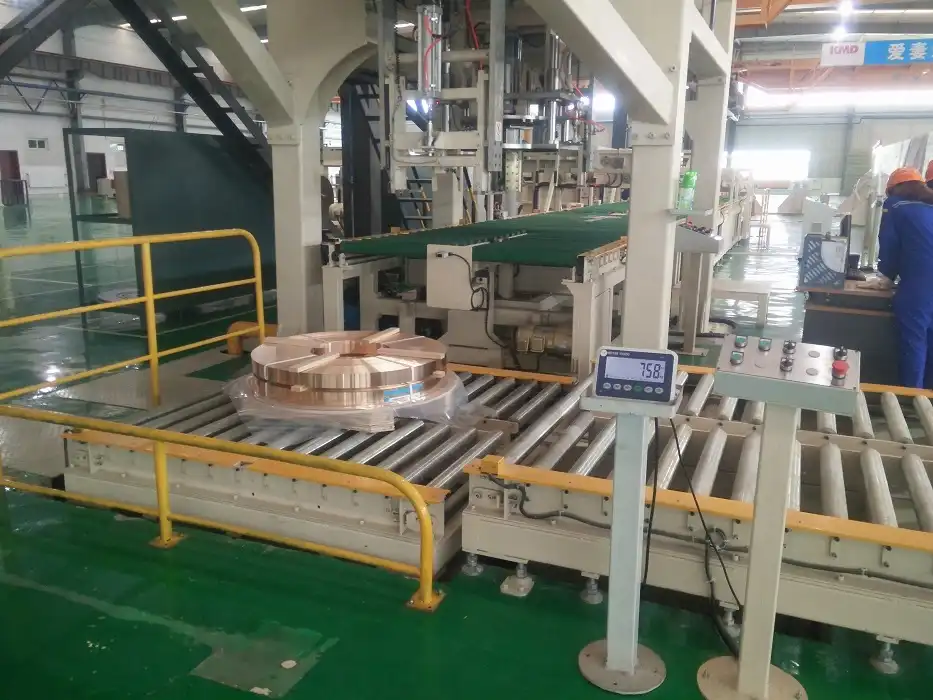
When I visited a steel manufacturing plant, I saw firsthand how coil wrapping machines are used to protect coils of various sizes. The machines ensured that each coil was evenly wrapped, providing a protective barrier against environmental factors. This not only preserves the quality of the coils but also reduces the risk of costly damages during transit.
3.2 Wire and Cable Manufacturing
The wire and cable manufacturing industry also relies heavily on coil wrapping machines. In this industry, coils of wire or cable need to be protected from moisture, dust, and physical damage. Wrapping these coils ensures that they remain in pristine condition until they’re ready for use.
I found that coil wrapping machines in this industry are often customized to handle the specific needs of wire and cable production. For example, some machines are equipped with specialized arms that can wrap coils of varying diameters with precision. This level of customization is crucial for maintaining the integrity of the coils.
3.3 Paper and Textile Industries
In the paper and textile industries, coil wrapping machines are used to protect rolls of paper or fabric. These materials are often sensitive to environmental factors like humidity and dust, making protective wrapping essential.
During my research, I came across a textile factory that used coil wrapping machines to protect rolls of fabric. The machines ensured that each roll was tightly wrapped, preventing any exposure to moisture or contaminants. This not only preserved the quality of the fabric but also extended its shelf life.
3.4 Custom Applications and Specialized Wrapping
Beyond the standard applications, coil wrapping machines are also used in specialized industries that require custom wrapping solutions. For example, some machines are designed to handle coils of unusual shapes or sizes, while others are equipped with advanced features like heat sealing or adhesive application.
I was particularly intrigued by a company that used coil wrapping machines to protect coils of medical-grade tubing. The machines were customized to apply a sterile wrapping material, ensuring that the tubing remained uncontaminated until it reached its destination. This level of specialization highlights the versatility of coil wrapping machines.
3.5 Two Fact Statements
- True Fact: Coil wrapping machines are essential in the steel and aluminum industries for protecting coils from corrosion and physical damage.
Explanation: The protective wrapping provided by these machines helps preserve the quality of the coils, reducing the risk of costly damages. - False Fact: Coil wrapping machines are only used in the steel and aluminum industries.
Explanation: Coil wrapping machines have a wide range of applications, including wire and cable manufacturing, paper and textile industries, and specialized custom applications.
How to Choose the Right Coil Wrapping Machine?
4.1 Factors to Consider When Selecting a Machine
Choosing the right coil wrapping machine can be a daunting task, given the variety of options available. Here are some key factors to consider:
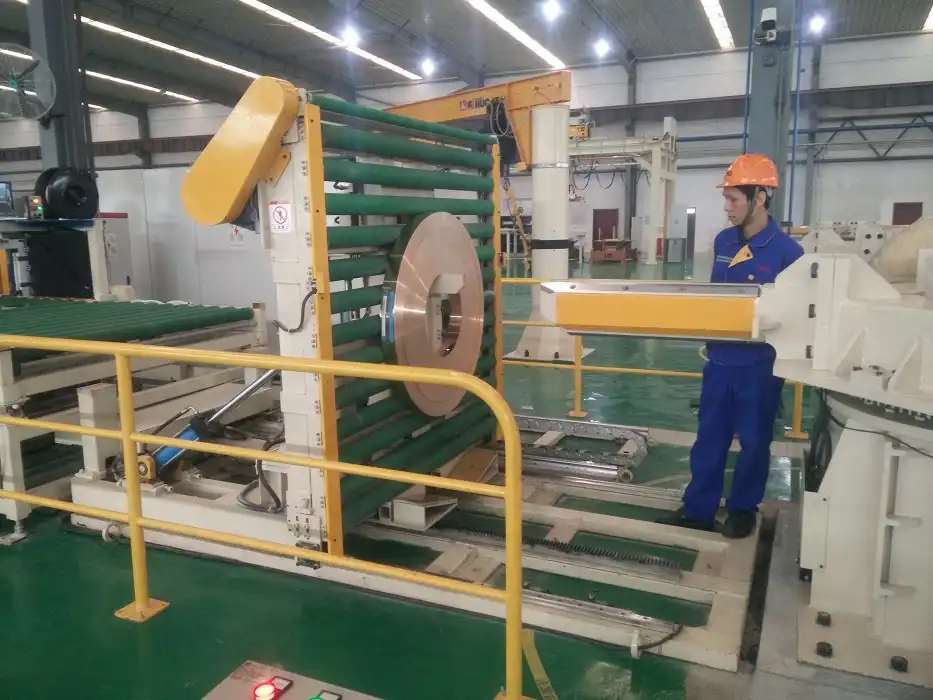
| Factor | Description |
|---|---|
| Production Volume | High-volume operations may require fully automatic machines for efficiency. |
| Coil Size and Weight | Ensure the machine can handle the dimensions and weight of your coils. |
| Wrapping Material | Choose a machine compatible with the material you use (film, paper, foil, etc.). |
| Budget | Balance cost with the features and capabilities you need. |
| Space Availability | Consider the size of the machine and whether it fits in your facility. |
| Maintenance Requirements | Opt for machines with easy maintenance and reliable support. |
When I was selecting a coil wrapping machine for a project, I found that evaluating these factors helped narrow down the options. For example, if you’re working with large, heavy coils, a turntable machine might be the best choice. On the other hand, if you need flexibility for varying coil sizes, a rotary arm machine could be more suitable.
4.2 Cost vs. Efficiency: Finding the Balance
One of the biggest challenges in choosing a coil wrapping machine is balancing cost and efficiency. While fully automatic machines offer the highest efficiency, they also come with a higher price tag. On the other hand, manual machines are more affordable but may not meet the demands of high-volume production.
I discovered that it’s essential to evaluate your long-term needs before making a decision. For instance, if you anticipate scaling up your operations in the future, investing in a semi-automatic or fully automatic machine might be more cost-effective in the long run. However, if your production volume is low and unlikely to increase, a manual machine could suffice.
4.3 Maintenance and Longevity of Coil Wrapping Machines
Regular maintenance is crucial for ensuring the longevity and performance of coil wrapping machines. Neglecting maintenance can lead to breakdowns, inconsistent wrapping quality, and increased downtime. Here are some maintenance tips:
| Maintenance Task | Frequency | Purpose |
|---|---|---|
| Lubricate moving parts | Monthly | Reduces friction and wear, ensuring smooth operation. |
| Inspect sensors and controls | Quarterly | Ensures accurate operation and prevents errors. |
| Replace worn-out components | As needed | Prevents breakdowns and maintains wrapping quality. |
| Clean the machine | Weekly | Removes dust and debris that could affect performance. |
By following a regular maintenance schedule, you can extend the lifespan of your coil wrapping machine and avoid costly repairs.
4.4 Future Trends in Coil Wrapping Technology
The coil wrapping industry is constantly evolving, with new technologies emerging to improve efficiency and functionality. Some of the trends to watch out for include:
- Smart Machines: Integration of IoT (Internet of Things) for real-time monitoring and diagnostics.
- Energy Efficiency: Development of machines that consume less power while maintaining high performance.
- Customization: Increased demand for machines that can handle specialized wrapping requirements.
I believe that staying informed about these trends can help you make future-proof decisions when investing in coil wrapping technology.
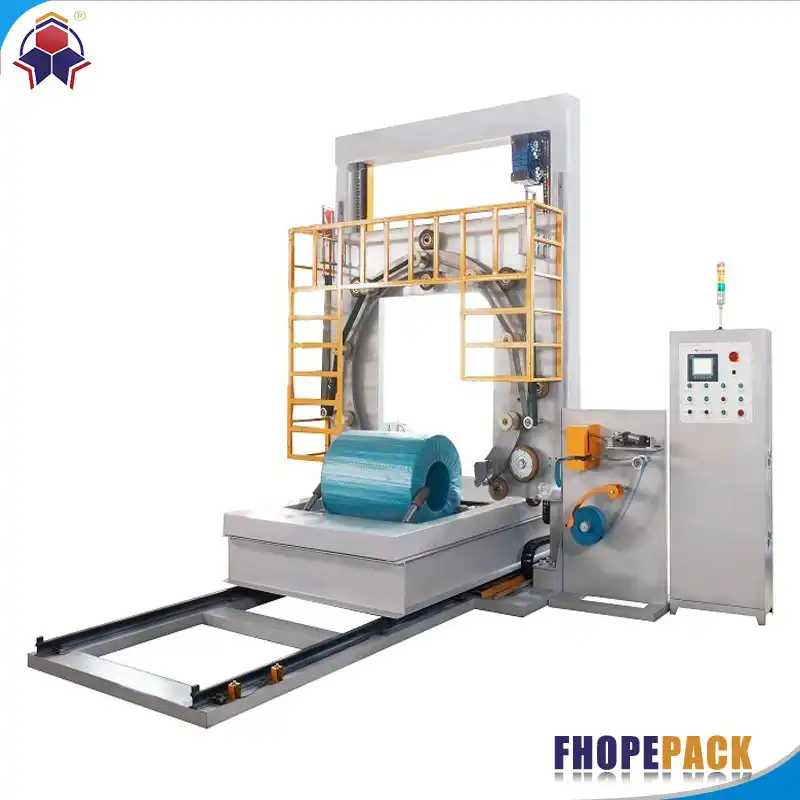
Conclusion
Coil wrapping machines are an essential part of many industries, offering protection and efficiency for coils of various materials. From manual to fully automatic systems, the options are vast, each with its own set of advantages and limitations. By understanding the different types of machines, their applications, and how to choose the right one, you can make an informed decision that meets your business needs.
As technology continues to advance, we can expect even more innovative solutions in the coil wrapping industry. Whether you’re in steel production, wire manufacturing, or any other field that uses coils, investing in the right wrapping machine can significantly enhance your operations.

